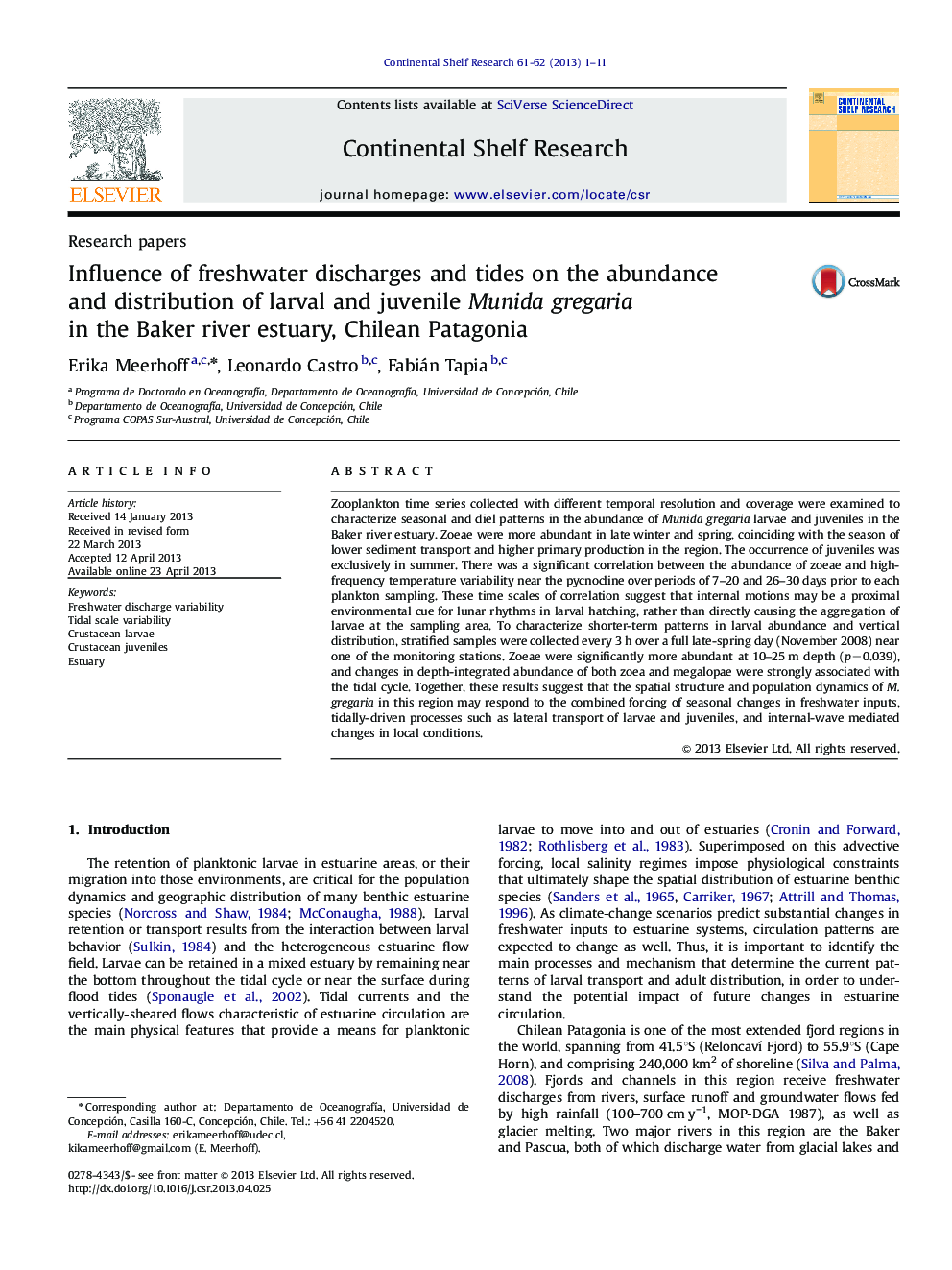| کد مقاله | کد نشریه | سال انتشار | مقاله انگلیسی | نسخه تمام متن |
|---|---|---|---|---|
| 4532139 | 1626150 | 2013 | 11 صفحه PDF | دانلود رایگان |

• Zoeae were more abundant in late winter and spring season of higher primary production.
• The occurrence of juveniles was exclusively in summer.
• Larval abundance was correlated to high-frequency temperature variability near the pycnocline.
• Changes in depth-integrated abundance of zoea were associated with tidal cycle.
Zooplankton time series collected with different temporal resolution and coverage were examined to characterize seasonal and diel patterns in the abundance of Munida gregaria larvae and juveniles in the Baker river estuary. Zoeae were more abundant in late winter and spring, coinciding with the season of lower sediment transport and higher primary production in the region. The occurrence of juveniles was exclusively in summer. There was a significant correlation between the abundance of zoeae and high-frequency temperature variability near the pycnocline over periods of 7–20 and 26–30 days prior to each plankton sampling. These time scales of correlation suggest that internal motions may be a proximal environmental cue for lunar rhythms in larval hatching, rather than directly causing the aggregation of larvae at the sampling area. To characterize shorter-term patterns in larval abundance and vertical distribution, stratified samples were collected every 3 h over a full late-spring day (November 2008) near one of the monitoring stations. Zoeae were significantly more abundant at 10–25 m depth (p=0.039), and changes in depth-integrated abundance of both zoea and megalopae were strongly associated with the tidal cycle. Together, these results suggest that the spatial structure and population dynamics of M. gregaria in this region may respond to the combined forcing of seasonal changes in freshwater inputs, tidally-driven processes such as lateral transport of larvae and juveniles, and internal-wave mediated changes in local conditions.
Journal: Continental Shelf Research - Volumes 61–62, 1 July 2013, Pages 1–11